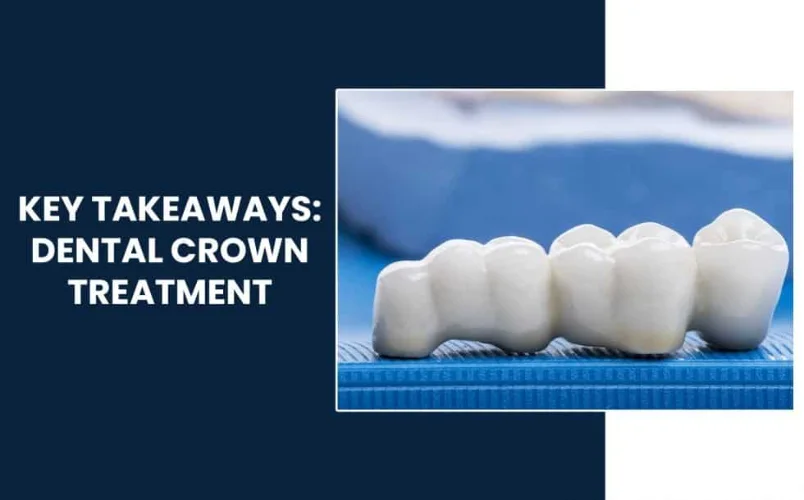A damaged tooth can be made to look great and function again with dental crowns, a procedure that has been around for a while. These tooth-shaped caps aid in tooth restoration.
What is a dental crown, and do I need one if my dentist says I do? And what kind of dental crown is ideal for me?
You can better comprehend the various dental crown options with the aid of this short guide.
What is a dental crown?
A cap or cover that is made specifically to go over a patient’s tooth is called a dental crown. It is most frequently used to strengthen teeth and restore their size and shape. The crown completely encases the tooth and offers complete coverage as it is cemented onto the existing tooth.
What are dental crowns made of?
The dental crown is made from a variety of materials depending on the requirements and preferences of the patient. Both temporary and permanent crowns are available. While a permanent crown is created at a dental laboratory, the temporary crown is created by the dentist right in the office. The many materials used to create crowns include:
- Stainless steel
While the permanent crown is being created, a tooth can be protected with a stainless steel temporary crown. They are most frequently used on young children to cover a primary tooth that has decayed.
- Metals
Metal crowns are durable and can withstand chewing and biting. They rarely chipsince they are so sturdy. The color is the sole drawback, which is why it is typically used in the back of the mouth.
- Porcelain-fused-to-metal
When both strength and aesthetics are required, porcelain-fused-to-metal is used. The porcelain can be cosmetically preferred and can be color matched to the neighbouring teeth. When a dental bridge needs greater strength, porcelain and metal can be bonded.
- All-ceramic or all-porcelain
Ceramic or porcelain crowns offer a a natural color and can mimic the color of existing teeth. Even those with allergies to metals can use it.
Procedure to place a crown
The crown is often placed in two appointments. The dentist shapes the tooth at the initial appointment. The type of dental crown that will be used determines how the tooth will be shaped. An impression of the tooth is taken after it has been shaped and this information is sent to the lab for crown development.
The crown is affixed to the tooth at the second appointment to ensure proper fit. If it fits according to plan, luting cement is used to cure it.
Some features of dental crowns:
- Similar to the original tooth
- Operates similarly to the existing tooth
- It feels similar to the regular tooth
- It has a long wear life
- A budget-friendly option
Life of a crown
The typical lifespan of a crown is ten years, but with proper care, that lifespan can increase to twenty to twenty-five years. For a crown that will last, the patient must abide by several fundamental guidelines.
Here are some pointers for maintaining your dental crowns:
Regular brushing
Brushing and flossing your teeth on a regular basis will maintain your crown for longer.
Avoid sticky foods
Foods with a sticky texture can damage your crown. If the sticky food scraps are not routinely cleared, the crowns could be harmed.
Use a night guard
While you sleep, a night guard can serve as a cushion in your mouth to protect your teeth. A tried-and-true method of preventing teeth clenching and grinding is by wearing a night guard.
What can I do to make my dental crowns more durable?
Just like the rest of your teeth, take good care of them and the gums around them. Avoid chewing on anything hard with them, such as nuts, seeds, some candies, ice, etc. It’s also recommended to avoid sticky items, such as some candies and chewing gum. Crowns ca break considerably more easily than your natural teeth.
Visit Rincon Family Dentistry to see if you need a dental crown Our clinic is one of Tucson, Arizona’s most cutting-edge dentalclinics in the city.

